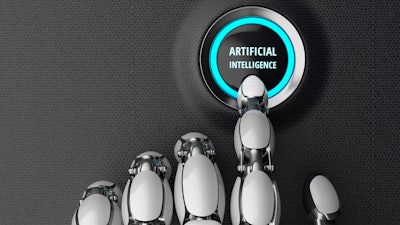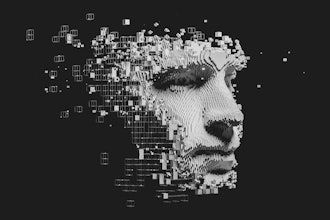
Nearly all industries faced new risks and experienced costly disruptions during the COVID-19 pandemic. Many industries embraced technology to overcome these challenges. The manufacturing and distribution industry is no exception. Over recent years it has accelerated its adoption of new and innovative technologies to enhance efficiency, productivity, and overall performance.
Among the most notable of these advancements is the integration of artificial intelligence, which provides businesses with significant capabilities in risk mitigation. By leveraging AI-driven solutions, manufacturers and distributors can proactively identify, analyze, and address potential risks—ultimately ensuring smoother operations, reduced losses and improved resilience. The following represent several of the key areas where AI has the potential to revolutionize risk management.
- Predictive Maintenance. Traditionally, machine maintenance is routine and reactive. Unfortunately, this can lead to costly downtime. With the use of AI-powered systems, however, companies can now analyze vast amounts of data from sensors, machinery and historical maintenance records to predict equipment failures before they occur. These predictive maintenance strategies ultimately mitigating production risks and financial losses.
- Supply Chain Visibility and Optimization. Supply chain disruptions are one of the most significant challenges faced in recent years. AI can help mitigate the severe consequences of these disruptions by enhancing supply chain visibility and optimizing operations. Through real-time data analysis and machine learning algorithms, AI can identify potential bottlenecks, forecast demand, and optimize inventory management. By gaining deeper insights into supply chain dynamics, businesses can proactively respond to changing market conditions, avoid stockouts or excess inventory, and minimize the impact of disruptions that might include natural disasters, geopolitical events or supplier issues.
- Product Quality. Product is paramount and quality control is always a key concern. Companies can now use AI-driven quality control systems to inspect and detect defects in products with unmatched accuracy and speed. Furthermore, computer vision technologies, combined with AI algorithms, enable automated visual inspection of products during the production process. This ensures that only the highest quality products reach consumers and enables companies to reduce product recalls, customer complaints and associated reputational risks.
- Comprehensive Risk Assessments. Human error poses a significant threat within risk management. Alternatively, AI excels in analyzing complex data sets and identifying patterns that the human eye may overlook. More specifically, AI can perform comprehensive risk assessments by analyzing historical data, market trends and external factors that might impact the industry. By identifying potential risks in advance, manufacturers and distributors can take proactive measures to mitigate their impact, such as adjusting production schedules, diversifying suppliers, or exploring new markets.
- Worker Safety. Worker safety is a top priority and significant risk. With the use of AI, however, manufacturing and distribution companies can now better ensure and promote the safety of their workers. More specifically, AI can analyze data from wearable devices, CCTV cameras, and other sensors to detect hazardous situations and predict potential accidents. AI can also assist in maintaining regulatory compliance by continuously monitoring processes and ensuring adherence to safety protocols and environmental regulations.
- Cybersecurity. Cybersecurity risks have become more pronounced in recent years as the industry shifts to digital systems and increasingly relies on data-driven processes. However, manufacturers and distributors can use AI to guard against these cyber threats. AI-based cybersecurity solutions can analyze network traffic, identify anomalies, and detect potential cyber threats in real time. Furthermore, AI can help prevent fraudulent activities in the distribution sector by analyzing transactional data, customer behavior, and other relevant patterns—allowing companies to safeguard their financial interests and protect their reputation.
From revolutionizing machine maintenance and enhancing supply chain visibility to maintaining product quality, performing risk assessments, enhancing workplace safety, and detecting cyber threats, AI has emerged as a pivotal tool in revolutionizing risk mitigation. The integration of AI offers a competitive advantage by enhancing efficiency, reducing downtime, and protecting businesses from potential threats.
As the technology landscape continues to evolve, embracing AI for risk mitigation will become a necessity for companies aiming to thrive in an increasingly competitive and unpredictable business landscape.




















